Innovative Bionics Product Life-Cycle Management Methodology Framework with Built-In Reverse Biomimetics: From Inception to Clinical Validation
Abstract
1. Introduction
1.1. Functional Modelling as an Abstraction Method
1.2. Reverse Engineering as Abstraction Method for Knowledge Transfer
1.3. Functional Feature-Based Modelling as a Shape Abstraction for Knowledge Transfer
1.4. “Reverse Biomimetics”—Technical, Biology-Based Reverse Engineering as a Shape Abstraction
1.5. Large-Scale Human Skeletal Biological Systems—Skull and Hand
1.5.1. Strategies for Capturing the Nature Design Intents
1.5.2. Skull 3D Data Acquisition/Digitisation
1.5.3. Hand 3D Data Acquisition/Digitisation, RGEs and Segmentation Strategies
Hand RGEs and Segmentation Strategies
1.5.4. Hand Evaluation Strategy—Synergy-Based Approach
Function of Joints
2. Materials and Methods
2.1. Skull 3D Data Acquisition, Biomimetic Modelling
2.1.1. Phase 1—Digitisation Process
2.1.2. Phases 2, 3—Segmentations, Features Extraction, Curve, Surface, and Solid Modelling
2.1.3. Phases 4, 5—Mapping Clinical Chewing Trajectory and Computational Validation
2.2. Hand 3D Data Acquisition, Biomimetic Modelling
2.2.1. Phases 1 and 2—Digitisation Process and Pre-Alignment of Scanned Data (Point Clouds)
- Data cleaning of scanned point clouds.
2.2.2. Phase 3—Segmentations, Feature Extraction, and Curve, Surface and Solid Modelling
- Hand RGEs strategy and segmentation process.
- 2.
- Verify the integrity of pre-aligned hand bones solid model.
- 3.
- Alignment and functional registration according to RGEs strategy.
- 4.
- Numbering Individual Digital Hand Bone
2.2.3. Phases 4, 5—Computational Evaluation with Multi-Body Dynamics and FEA
Siemens NX Multi-Body Dynamic (MBD) Simulation and FEA
- Identification of centre of joints.
- 2.
- Postural synergies simulation and clinical validation.
- 3.
- Hand alignment evaluation.
- Pinch and posing.
- Grasping various objects.
- Clinical validation with Fugl-Meyer assessment (FMA) and Kapandji test.
3. Results—Innovative, Bio-Inspired Product Development
3.1. Phase 6—Prototyping, Proof of Concept and Clinical Validation of a Drug-Releasing Chewing Robot
3.2. Prosthetic Hand—Analysis of Spherical Grip Contact Reaction Forces
Phase 6—Prototyping and Proof of Concept of an Anthropometric Prosthetic Hand
- Hand actuation design.
- 2.
- Prototyping and concept proof.
4. Discussion
5. Conclusions
6. Patents
Funding
Institutional Review Board Statement
Data Availability Statement
Acknowledgments
Conflicts of Interest
References
- ISO 18458:2015; Biomimetics—Terminology, Concepts and Methodology. ISO: Geneva, Switzerland, 2015.
- Hayes, S.; Desha, C.; Baumeister, D. Learning from nature–Biomimicry innovation to support infrastructure sustainability and resilience. Technol. Forecast. Soc. Change 2020, 161, 120287. [Google Scholar] [CrossRef]
- Benyus, J.M. Biomimicry; William Morrow: New York, NY, USA, 1997. [Google Scholar]
- Wanieck, K.; Fayemi, P.E.; Maranzana, N.; Zollfrank, C.; Jacobs, S. Biomimetics and its tools. Bioinspired Biomim. Nanobiomater. 2017, 6, 53–66. [Google Scholar] [CrossRef]
- Baumeister, D.; Tocke, R.; Dwyer, J.; Ritter, S. Biomimicry Resource Handbook: A Seed Bank of Best Practices; Biomimicry 3.8: Missoula, MT, USA, 2013. [Google Scholar]
- McInerney, S.J.; Khakipoor, B.; Garner, A.M.; Houette, T.; Unsworth, C.K.; Rupp, A.; Weiner, N.; Vincent, J.F.; Nagel, J.K.; Niewiarowski, P.H. E2BMO: Facilitating user interaction with a biomimetic ontology via semantic translation and interface design. Designs 2018, 2, 53. [Google Scholar] [CrossRef]
- Ahmed-Kristensen, S.; Christensen, B.T.; Lenau, T.A. Naturally original: Stimulating creative design through biological analogies and Random images. In Proceedings of the International Design Conference, DESIGN, Dubrovnik, Croatia, 19–22 May 2014; Volume 2014, pp. 427–436. [Google Scholar]
- Lenau, T.A.; Pigosso, D.C.A.; McAloone, T.; Lakhtakia, A. Biologically inspired design for environment. In Bioinspiration, Biomimetics, and Bioreplication X; International Society for Optics and Photonics: Bellingham, WA, USA, 2020; Volume 11374, p. 13. [Google Scholar]
- Graeff, E.; Maranzana, N.; Aoussat, A. Biological practices and fields, missing pieces of the biomimetics’ methodological puzzle. Biomimetics 2020, 5, 62. [Google Scholar] [CrossRef]
- Vincent, J.F.V.; Bogatyreva, O.A.; Bogatyrev, N.R.; Bowyer, A.; Pahl, A.K. Biomimetics: Its practice and theory. J. R. Soc. Interface 2006, 3, 471–482. [Google Scholar] [CrossRef] [PubMed]
- Hwang, J.; Jeong, Y.; Hong, J.W.; Choi, J. Biomimetics: Forecasting the Future of Science, Engineering, and Medicine. Int. J. Nanomed. 2015, 10, 5701–5713. [Google Scholar]
- Bar-Cohen, Y. Biomimetics—Using Nature to Inspire Human Innovation. Bioinspiration Biomim. 2006, 1, P1–P12. [Google Scholar] [CrossRef] [PubMed]
- Fu, K.; Moreno, D.; Yang, M.; Wood, K.L. Bio-inspired design: An overview investigating open questions from the broader field of design-by-analogy. J. Mech. Des. 2014, 136, 111102. [Google Scholar] [CrossRef]
- Fayemi, P.-E.; Wanieck, K.; Zollfrank, C.; Maranzana, N.; Aoussat, A. Biomimetics: Process, tools and practice. Bioinspir. Biomim. 2017, 12, 011002. [Google Scholar] [CrossRef] [PubMed]
- Velivela, P.T.; Zhao, Y.F. A comparative analysis of the state-of-the-art methods for multifunctional bio-inspired design and an introduction to domain integrated design (DID). Designs 2022, 6, 120. [Google Scholar] [CrossRef]
- Lenau, T.A.; Metze, A.-L.; Hesselberg, T. Paradigms for biologically inspired design. In Proceedings of the Bioinspiration, Biomimetics, and Bioreplication VIII, Denver, CO, USA, 4–8 March 2018; p. 1059302. [Google Scholar]
- Design Spiral. Available online: https://biomimicry.org/biomimicry-design-spiral/ (accessed on 2 November 2024).
- Helms, M.; Vattam, S.S.; Goel, A.K. Biologically inspired design: Process and products. Des. Stud. 2009, 30, 606–622. [Google Scholar] [CrossRef]
- Fayemi, P.-E.; Maranzana, N.; Aoussat, A.; Bersano, G. Bio-inspired design characterisation and its links with problem solving tools. In DS 77: Proceedings of the DESIGN 2014 13th International Design Conference, Dubrovnik, Croatia, 19–22 May 2014; The Design Society: Glasgow, UK, 2014; pp. 173–182. [Google Scholar]
- Lenau, T.A. Do biomimetic students think outside the box? In DS 87-4: Proceedings of the 21st International Conference on Engineering Design (ICED 17) Vol 4: Design Methods and Tools, Vancouver, BC, Canada, 21–25 August 2017; The Design Society: Glasgow, UK, 2017; pp. 543–552. [Google Scholar]
- Goel, A.K.; Vattam, S.; Wiltgen, B.; Helms, M. Information Processing Theories of Biologically Inspired Design Biologically Inspired Design; Springer: Berlin, Germany, 2014; pp. 127–152. [Google Scholar]
- Lindemann, U.; Gramann, J. Engineering design using biological principles. In DS 32: Proceedings of the DESIGN 2004, the 8th International Design Conference, Dubrovnik, Croatia, 18–21 May 2004; The Design Society: Glasgow, UK, 2004. [Google Scholar]
- Chakrabarti, A.; Sarkar, P.; Leelavathamma, B.; Nataraju, B. A functional representation for aiding biomimetic and artificial inspiration of new ideas. AI Eedam 2005, 19, 113–132. [Google Scholar] [CrossRef]
- Bogatyrev, N.R.; Vincent, J.F. Microfluidic actuation in living organisms: A biomimetic catalogue. In Proceedings of the 1st European Conference on Microfluidics, Bologna, Italy, 10–12 December 2008; p. 175. [Google Scholar]
- Lenau, T.A. Biomimetics as a design methodology-possibilities and challenges. In DS 58-5: Proceedings of the ICED 09, the 17th International Conference on Engineering Design, Vol. 5, Design Methods and Tools (Pt. 1), Palo Alto, CA, USA, 24–27 August 2009; The Design Society: Glasgow, UK, 2009. [Google Scholar]
- Nagel, J.K.; Nagel, R.L.; Stone, R.B.; McAdams, D.A. Function based, biologically inspired concept generation. Artif. Intell. Eng. Des. Anal. Manuf. 2010, 24, 521–535. [Google Scholar] [CrossRef]
- Sartori, J.; Pal, U.; Chakrabarti, A. A methodology for supporting “transfer” in biomimetic design. AI Edam 2010, 24, 483–506. [Google Scholar] [CrossRef]
- Cheong, H.; Chiu, I.; Shu, L.; Stone, R.; McAdams, D. Biologically meaningful keywords for functional terms of the functional basis. J. Mech. Des. 2011, 133, 021007. [Google Scholar] [CrossRef]
- Badarnah, L.; Kadri, U. A methodology for the generation of biomimetic design concepts. Archit. Sci. Rev. 2015, 58, 120–133. [Google Scholar] [CrossRef]
- Biomimicry Institute AskNature—Innovation Inspired by Nature. Available online: https://asknature.org/ (accessed on 23 November 2024).
- Vattam, S.S.; Wiltgen, B.; Helms, M.E.; Goel, A.K.; Yen, J. DANE: Fostering Creativity in and through Biologically Inspired Design. In Design Creativity 2010; Springer: London, UK, 2011; pp. 115–122. [Google Scholar]
- Vattam, S.S.; Goel, A.K. Foraging for Inspiration: Understanding and Supporting the Online Information Seeking Practices of Biologically Inspired Designers. In Proceedings of the ASME 2011 International Design Engineering Technical Conferences and Computers and Information in Engineering Conference, Washington, DC, USA, 28–31 August 2011; pp. 177–186. [Google Scholar]
- Vandevenne, D.; Verhaegen, P.-A.; Dewulf, S.; Duflou, J.R. SEABIRD: Scalable search for systematic biologically inspired design. Artif. Intell. Eng. Des. Anal. Manuf. AI Edam 2016, 30, 78–95. [Google Scholar] [CrossRef]
- Shu, L.H. A natural-language approach to biomimetic design. Artif. Intell. Eng. Des. Anal. Manuf. AI Edam 2010, 24, 507–519. [Google Scholar] [CrossRef]
- Kruiper, R.; Vincent, J.F.V.; Chen-Burger, J.; Desmulliez, M.P.Y.; Konstas, I. A Scientific Information Extraction Dataset for Nature Inspired Engineering. arXiv 2020, arXiv:2005.07753. [Google Scholar]
- Vincent, J.F.V.; Cavallucci, D. Development of an ontology of biomimetics based on altshuller’s matrix. In International TRIZ Future Conference; IFIP Advances in Information and Communication Technology; Springer: Cham, Switzerland, 2018; Volume 541, pp. 14–25. [Google Scholar]
- Keshwani, S.; Lenau, T.A.; Ahmed-Kristensen, S.; Chakrabarti, A. Comparing novelty of designs from biological-inspiration with those from brainstorming. J. Eng. Des. 2017, 28, 654–680. [Google Scholar] [CrossRef]
- Grae, E.; Maranzana, N.; Aoussat, A. Engineers’ and Biologists’ Roles during Biomimetic Design Processes, Towards a Methodological Symbiosis. In Proceedings of the International Conference on Engineering Design, ICED, Delft, The Netherlands, 5–8 August 2019; Volume 1, pp. 319–328. [Google Scholar]
- Graeff, E.; Maranzana, N.; Aoussat, A. A shared framework of reference, a first step toward Engineers’ and Biologists’ Synergic reasoning in biomimetic design teams. J. Mech. Des. 2021, 143, 041402. [Google Scholar] [CrossRef]
- Graeff, E.; Letard, A.; Raskin, K.; Maranzana, N.; Aoussat, A. Biomimetics from practical feedback to an interdisciplinary process. Res. Eng. Des. 2021, 32, 349–375. [Google Scholar] [CrossRef]
- Nagel, J.K.; Schmidt, L.; Born, W. Fostering diverse analogical transfer in bio-inspired design. In Proceedings of the International Design Engineering Technical Conferences and Computers and Information in Engineering Conference, Boston, MA, USA, 2–5 August 2015; American Society of Mechanical Engineers: New York, NY, USA, 2015; Volume 57106, p. V003T04A028. [Google Scholar]
- Nagel, J.K.; Schmidt, L.; Born, W. Establishing analogy categories for bio-inspired design. Designs 2018, 2, 47. [Google Scholar] [CrossRef]
- Mak, T.W.; Shu, L.H. Abstraction of biological analogies for design. CIRP Ann. 2004, 531, 117–120. [Google Scholar] [CrossRef]
- Weidner, B.V.; Nagel, J.; Weber, H.J. Facilitation method for the translation of biological systems to technical design solutions. Int. J. Des. Creat. Innov. 2018, 6, 211–234. [Google Scholar] [CrossRef]
- Nagel, J.K.S.; Nagel, R.L.; Stone, R.B. Abstracting biology for engineering design. Int. J. Des. Eng. 2011, 4, 23. [Google Scholar] [CrossRef]
- Gero, J.S. Design prototypes: A knowledge representation schema for design. AI Mag. 1990, 11, 26. [Google Scholar] [CrossRef]
- Bhasin, D.; McAdams, D.A. The characterization of biological organization, abstraction, and novelty in biomimetic design. Designs 2018, 2, 54. [Google Scholar] [CrossRef]
- Wanieck, K.; Hamann, L.; Bartz, M.; Uttich, E.; Hollermann, M.; Drack, M.; Beismann, H. Biomimetics Linked to Classical Product Development: An Interdisciplinary Endeavor to Develop a Technical Standard. Biomimetics 2022, 7, 36. [Google Scholar] [CrossRef]
- Wanieck, K.; Beismann, H. Perception and role of standards in the world of biomimetics. Bioinspired Biomim. Nanobiomater. 2021, 10, 8–15. [Google Scholar] [CrossRef]
- VDI 6220 Blatt 2:2023-07; Biomimetics—Biomimetic Design Methodology—Products and Processes. Beuth: Berlin, Germany, 2023.
- Walter, L.; Isenmann, R.; Moehrle, M.G. Bionics in patents–semantic-based analysis for the exploitation of bionic principles in patents. Procedia Eng. 2011, 9, 620–632. [Google Scholar] [CrossRef]
- Roth, R.R. The foundation of bionics. Perspect. Biol. Med. 1983, 26, 229–242. [Google Scholar] [CrossRef] [PubMed]
- Bionics Institute. Available online: https://www.bionicsinstitute.org/ (accessed on 23 October 2024).
- Russo, D.; Fayemi, P.E.; Spreafico, M.; Bersano, G. Design entity recognition for bio-inspired design supervised state of the art. In Proceedings of the Automated Invention for Smart Industries: 18th International TRIZ Future Conference, TFC 2018, Strasbourg, France, 29–31 October 2018; Proceedings. Springer International Publishing: Cham, Switzerland, 2018; pp. 3–13. [Google Scholar]
- Nachtigall, W. Bionik: Grundlagen und Beispiele für Ingenieure und Naturwissenschaftler; Springer: Berlin, Germany, 2002. [Google Scholar]
- Várady, T.; Martin, R.R.; Cox, J. Reverse engineering of geometric models—An introduction. Comput.-Aided Des. 1997, 29, 255–268. [Google Scholar] [CrossRef]
- Várady, T.; Martin, R. Reverse engineering. In Handbook of Computer Aided Geometric Design; Elsevier: Amsterdam, The Netherlands, 2002; pp. 651–681. [Google Scholar]
- Várady, T.; Facello, M.A.; Terék, Z. Automatic extraction of surface structures in digital shape reconstruction. Comput.-Aided Des. 2007, 39, 379–388. [Google Scholar] [CrossRef]
- Várady, T. Automatic procedures to create CAD models from measured data. Comput.-Aided Des. Appl. 2008, 5, 577–588. [Google Scholar] [CrossRef]
- Speck, O.; Speck, D.; Horn, R.; Gantner, J.; Sedlbauer, K.P. Biomimetic bio-inspired biomorph sustainable? An attempt to classify and clarify biology-derived technical developments. Bioinspir. Biomim. 2017, 12, 011004. [Google Scholar] [CrossRef]
- Möller, M.; Speck, T.; Speck, O. Sustainability assessments inspired by biological concepts. Technol. Soc. 2024, 78, 102630. [Google Scholar] [CrossRef]
- Harthikote Nagaraja, V. Motion Capture and Musculoskeletal Simulation Tools to Measure Prosthetic Arm Functionality. Ph.D. Thesis, University of Oxford, Oxford, UK, 2019. [Google Scholar]
- Hill, B. Goal Setting Through Contradiction Analysis in the Bionics-Oriented Construction Process. Creat. Innov. Manag. 2005, 14, 59–65. [Google Scholar] [CrossRef]
- Chandrasegaran, S.K.; Ramani, K.; Sriram, R.D.; Horváth, I.; Bernard, A.; Harik, R.F.; Gao, W. The evolution, challenges, and future of knowledge representation in product design systems. Comput.-Aided Des. 2013, 45, 204–228. [Google Scholar] [CrossRef]
- Pahl, G.; Beitz, W.; Feldhusen, J.; Grote, K.-H. Engineering Design—A Systematic Approach, 3rd ed.; Springer: Berlin/Heidelberg, Germany; The Design Council: London, UK, 1996; ISBN 085072239X. [Google Scholar]
- Owen, R.; Horváth, I. Towards product-related knowledge asset warehousing in enterprises. In Proceedings of the 4th International Symposium on Tools and Methods of Competitive Engineering, TMCE 2002, Wuhan, China, 22–26 April 2002; pp. 155–170. [Google Scholar]
- Kovács, I.; Várady, T.; Salvi, P. Applying geometric constraints for perfecting CAD models in reverse engineering. Graph. Models 2015, 82, 44–57. [Google Scholar] [CrossRef]
- Kovács, I. Curves and Surfaces Determined by Geometric Constraints. Ph.D. Thesis, Budapest University of Technology and Economics, Budapest, Hungary, 2021. [Google Scholar]
- Wainwright, P.C. Morphology and ecology: The functional basis of feeding constraints in Caribbean labrid fishes. Ecology 1988, 69, 635–645. [Google Scholar] [CrossRef]
- Helfman Cohen, Y.; Reich, Y.; Greenberg, S. Biomimetics: Structure–function patterns approach. J. Mech. Des. 2014, 136, 111108. [Google Scholar] [CrossRef]
- Snell-Rood, E.C.; Smirnoff, D. Biology for biomimetics I: Function as an interdisciplinary bridge in bio-inspired design. Bioinspiration Biomim. 2023, 18, 052001. [Google Scholar] [CrossRef]
- Alemzadeh, K.; Jones, S.B.; Davies, M.; West, N. Development of a chewing robot with built-in humanoid jaws to simulate mastication to quantify robotic agents release from chewing gums compared to human participants. IEEE Trans. Biomed. Eng. 2020, 68, 492–504. [Google Scholar] [CrossRef] [PubMed]
- Speck, O.; Speck, T. Biomimetics and education in Europe: Challenges, opportunities, and variety. Biomimetics 2021, 6, 49. [Google Scholar] [CrossRef] [PubMed]
- Erden, M.S.; Komoto, H.; Beek, T.J.V.; D’Amelio, V.; Echavarria, E.; Tomiyama, T. A review of functional modeling: Approaches and applications. Artificial Intelligence for Engineering Design. Anal. Manuf. 2008, 22, 47–169. [Google Scholar]
- Hirtz, J.; Stone, R.B.; McAdams, D.A.; Szykman, S.; Wood, K.L. A functional basis for engineering design: Reconciling and evolving previous efforts. Res. Eng. Des. 2002, 13, 65–82. [Google Scholar] [CrossRef]
- Eisenbart, B.; Gericke, K.; Blessing, L. A framework for comparing design modelling approaches across disciplines. In DS 68-2: Proceedings of the 18th International Conference on Engineering Design (ICED 11), Impacting Society through Engineering Design, Vol. 2: Design Theory and Research Methodology, Lyngby/Copenhagen, Denmark, 15–19 August 2011; The Design Society: Glasgow, UK; pp. 344–355.
- Stone, R.B.; Wood, K.L. Development of a functional basis for design. In Proceedings of the International Design Engineering Technical Conferences and Computers and Information in Engineering Conference, Las Vegas, NV, USA, 12–16 September 1999; American Society of Mechanical Engineers: Washington, DC, USA, 1999; Volume 19739, pp. 261–275. [Google Scholar]
- Miles, L. Techniques of Value Analysis and Engineering; McGraw–Hill: New York, NY, USA, 1961. [Google Scholar]
- Dieter, G. Engineering Design: A Materials and Processing Approach; McGraw–Hill: New York, NY, USA, 1991. [Google Scholar]
- Cutherell, D. Product architecture. In The PDMA Handbook of New Product Development; Rosenau, M., Jr., Ed.; Wiley: New York, NY, USA, 1996. [Google Scholar]
- Otto, K.N.; Wood, K.L. Product Design: Techniques in Reverse Engineering and New Product Development; Prentice–Hall: Upper Saddle River, NJ, USA, 2001. [Google Scholar]
- Ulrich, K.T.; Eppinger, S.D. Product Design and Development; McGraw–Hill/Irwin: Boston, MA, USA, 2004. [Google Scholar]
- Ullman, D.G. The Mechanical Design Process, 4th ed.; McGraw–Hill: New York, NY, USA, 2009. [Google Scholar]
- Sharma, S.; Sarkar, P. A framework to describe biological entities for bioinspiration. Int. J. Interact. Des. Manuf. 2024, 18, 5681–5700. [Google Scholar] [CrossRef]
- Eisenbart, B.; Gericke, K.; Blessing, L. An analysis of functional modeling approaches across disciplines. Ai Edam 2013, 27, 281–289. [Google Scholar] [CrossRef]
- Eisenbart, B.; Gericke, K.; Blessing, L.T.; McAloone, T.C. A DSM-based framework for integrated function modelling: Concept, application and evaluation. Res. Eng. Des. 2017, 28, 25–51. [Google Scholar] [CrossRef]
- Nagel, R.L.; Midha, P.A.; Tinsley, A.; Stone, R.B.; McAdams, D.; Shu, L. Exploring the use of functional models in biomimetic conceptual design. J. Mech. Des. 2008, 130, 2–13. [Google Scholar] [CrossRef]
- Nagel, J.K.; Stone, R.B.; McAdams, D.A. Function-based biologically inspired design. In Biologically Inspired Design: Computational Methods and Tools; Springer: London, UK, 2014; pp. 95–125. [Google Scholar]
- Fayemi, P.E.; Maranzana, N.; Aoussat, A.; Bersano, G. Assessment of the biomimetic toolset—Design Spiral methodology analysis. In ICoRD’15–Research into Design Across Boundaries Volume 2: Creativity, Sustainability, DfX, Enabling Technologies; Management and Applications; Springer: New Delhi, India, 2015; pp. 27–38. [Google Scholar]
- Deldin, J.M.; Schuknecht, M. The AskNature database: Enabling solutions in biomimetic design. In Biologically Inspired Design: Computational Methods and Tools; Springer: London, UK, 2013; pp. 17–27. [Google Scholar]
- Biomimicry Institute. Biomimicry Taxonomy. 2024. Available online: https://toolbox.biomimicry.org/wp-content/uploads/2015/01/AN_Biomimicry_Taxonomy.pdf (accessed on 23 October 2024).
- Kozaki, K.; Mizoguchi, R. An Ontology Explorer for Biomimetics Database. In ISWC (Posters & Demos); Springer Nature: Cham, Switzerland, 2014; pp. 469–472. [Google Scholar]
- Kozaki, K. 2024. Available online: http://biomimetics.hozo.jp/ontology_db.html (accessed on 23 October 2024).
- Vandevenne, D.; Verhaegen, P.A.; Dewulf, S.; Duflou, J.R. Automatically populating the biomimicry taxonomy for scalable systematic biologically-inspired design. In Proceedings of the ASME 2012 International Design Engineering Technical Conferences and Computers and Information in Engineering Conference, Chicago, IL, USA, 12–15 August 2012; American Society of Mechanical Engineers: New York, NY, USA, 2012; pp. 383–391. [Google Scholar]
- Vincent, J. Biomimetics with Trade-Offs. Biomimetics 2023, 8, 265. [Google Scholar] [CrossRef]
- Vincent, J.F. An ontology of biomimetics. In Biologically Inspired Design: Computational Methods and Tools; Springer: London, UK, 2014; pp. 269–285. [Google Scholar]
- Nagel, J.K.; Stone, R.B.; McAdams, D.A. An engineering-to-biology thesaurus for engineering design. In Proceedings of the International Design Engineering Technical Conferences and Computers and Information in Engineering Conference, Montreal, QC, Canada, 15–18 August 2010; Volume 44137, pp. 117–128. [Google Scholar]
- Nagel, J.K. A thesaurus for bioinspired engineering design. In Biologically Inspired Design: Computational Methods and Tools; Springer: London, UK, 2014; pp. 63–94. [Google Scholar]
- Belz, A.; Terrile, R.J.; Zapatero, F.; Kawas, M.; Giga, A. Mapping the “valley of death”: Managing selection and technology advancement in NASA’s Small Business Innovation Research program. IEEE Trans. Eng. Manag. 2019, 68, 1476–1485. [Google Scholar] [CrossRef]
- Chirazi, J.; Wanieck, K.; Fayemi, P.E.; Zollfrank, C.; Jacobs, S. What do we learn from good practices of biologically inspired design in innovation? Appl. Sci. 2019, 9, 650. [Google Scholar] [CrossRef]
- Ellwood, P.; Williams, C.; Egan, J. Crossing the valley of death: Five underlying innovation processes. Technovation 2022, 109, 102162. [Google Scholar] [CrossRef]
- Kampers, L.F.; Asin-Garcia, E.; Schaap, P.J.; Wagemakers, A.; dos Santos, V.A.M. Navigating the Valley of Death: Perceptions of industry and academia on production platforms and opportunities in biotechnology. EFB Bioeconomy J. 2022, 2, 100033. [Google Scholar] [CrossRef]
- Voland, G. Engineering by Design; Pearson Prentice–Hall: Upper Saddle River, NJ, USA, 2004. [Google Scholar]
- Henderson, K. On Line and on Paper: Visual Representations, Visual Culture, and Computer Graphics in Design Engineering; MIT Press: Cambridge, MA, USA, 1998. [Google Scholar]
- Nagel, J.K.; Stone, R.B. A systematic approach to biologically-inspired engineering design. In Proceedings of the International Design Engineering Technical Conferences and Computers and Information in Engineering Conference, Montreal, QC, Canada, 15–18 August 2010; Volume 54860, pp. 153–164. [Google Scholar]
- Chrysikou, E.G.; Weisberg, R.W. Following the wrong footsteps: Fixation effects of pictorial examples in a design problem solving task. J. Exp. Psychol. Learn. Mem. Cogn. 2005, 31, 1134–1148. [Google Scholar] [CrossRef]
- Linsey, J.; Murphy, J.; Markman, A.; Wood, K.L.; Kortoglu, T. Representing Analogies: Increasing the Probability of Innovation. In Proceedings of the ASME International Design Theory and Method Conference, Philadelphia, PA, USA, 10–13 September 2006. [Google Scholar]
- Linsey, J.; Tseng, I.; Fu, K.; Cagan, J.; Wood, K.; Schunn, C. A study of design fixation, its mitigation and perception in engineering design faculty. J. Mech. Des. 2010, 132, 041003. [Google Scholar] [CrossRef]
- Chikofsky, E.; Cross, J. Reverse Engineering and Design Recovery: A Taxonomy. IEEE Softw. 1990, 7, 13–17. [Google Scholar] [CrossRef]
- Anwer, N.; Mathieu, L. From reverse engineering to shape engineering in mechanical design. CIRP Ann. 2016, 65, 165–168. [Google Scholar] [CrossRef]
- Raja, V.; Fernandes, K.J. Reverse Engineering: An Industrial Perspective; Springer Science & Business Media: London, UK, 2007. [Google Scholar]
- Petrovic, V.; Vicente Haro Gonzalez, J.; Jordá Ferrando, O.; Delgado Gordillo, J.; Ramón Blasco Puchades, J.; Portolés Griñan, L. Additive layered manufacturing: Sectors of industrial application shown through case studies. Int. J. Prod. Res. 2011, 49, 1061–1079. [Google Scholar] [CrossRef]
- Marks, P. Capturing a Competitive Edge Through Digital Shape Sampling & Processing (DSSP); Blue Book Series; SME: Tokyo, Japan, 2005. [Google Scholar]
- Pieraccini, M.; Guidi, G.; Atzeni, C. 3D digitizing of cultural heritage. J. Cult. Herit. 2001, 2, 63–70. [Google Scholar] [CrossRef]
- Wu, S.; Shuman, L.; Bidanda, B.; Kelley, M.; Sochats, K.; Balaban, C. Agent-based discrete event simulation modeling for disaster responses. In Proceedings of the 2008 Industrial Engineering Research Conference, Institute of Industrial Engineers, Norcross, GA, USA, 17–21 May 2008; pp. 1908–1913. [Google Scholar]
- Bidanda, B.; Motavalli, S.; Harding, K. Reverse engineering: An evaluation of prospective non-contact technologies and applications in manufacturing systems. Int. J. Comput. Integr. Manuf. 1991, 4, 145–156. [Google Scholar] [CrossRef]
- Bidanda, B.; Narayanan, V.; Billo, R. Reverse Engineering and Rapid Prototyping, in Handbook of Design, Manufacturing and Automation; John Wiley & Sons: Hoboken, NJ, USA, 1994; pp. 977–990. [Google Scholar]
- Otto, K.; Wood, K. Product Evolution: A reverse Engineering and Redesign Methodology. Res. Prod. Dev. 1998, 10, 226–243. [Google Scholar] [CrossRef]
- Geng, Z.; Sabbaghi, A.; Bidanda, B. Reconstructing original design: Process planning for reverse engineering. IISE Trans. 2023, 55, 509–522. [Google Scholar] [CrossRef]
- Yoo, D.-J. Three-dimensional surface reconstruction of human bone using a b-spline based interpolation approach. Comput.-Aided Des. 2011, 43, 934–947. [Google Scholar] [CrossRef]
- VDI 5620; Reverse Engineering of Geometrical Data. VDI: Düsseldorf, Germany, 2017.
- Cha, B.K.; Lee, J.Y.; Jost-Brinkmann, P.-G.; Yoshida, N. Analysis of tooth movement in extraction cases using three-dimensional reverse engineering technology. Eur. J. Orthod. 2007, 29, 325–331. [Google Scholar] [CrossRef]
- Jiang, J.; Scott, P. Advanced Metrology: Freeform Surfaces, 1st ed.; Academic Press Inc.: New York, NY, USA, 2020. [Google Scholar] [CrossRef]
- Theologou, P.; Pratikakis, I.; Theoharis, T. A comprehensive overview of methodologies and performance evaluation frameworks in 3D mesh segmentation. Comput. Vis. Image Underst. 2015, 135, 49–82. [Google Scholar] [CrossRef]
- Geng, Z.; Bidanda, B. Review of reverse engineering systems current state of the art. Virtual Phys. Prototyp. 2017, 12, 161–172. [Google Scholar] [CrossRef]
- Buonamici, F.; Carfagni, M.; Furferi, R.; Governi, L.; Lapini, A.; Volpe, Y. Reverse engineering modeling methods and tools: A survey. Comput.-Aided Des. Appl. 2018, 15, 443–464. [Google Scholar] [CrossRef]
- Wilson, J.O.; Rosen, D. Systematic reverse engineering of biological systems. In Proceedings of the International Design Engineering Technical Conferences and Computers and Information in Engineering Conference, Las Vegas, NV, USA, 4–7 September 2007; Volume 48043, pp. 69–78. [Google Scholar]
- Yin, C.G.; Ma, Y.S. Parametric feature constraint modelling and mapping in product development. Adv. Eng. Inform. 2012, 26, 539–552. [Google Scholar] [CrossRef]
- Cheng, Z.; Ma, Y. A functional feature modelling method. Adv. Eng. Informatics. 2017, 33, 1–15. [Google Scholar] [CrossRef]
- Cheng, Z.; Ma, Y. Explicit function-based design modelling methodology with features. J. Eng. Des. 2017, 28, 205–231. [Google Scholar] [CrossRef]
- Li, L.; Zheng, Y.; Yang, M.; Leng, J.; Cheng, Z.; Xie, Y.; Jiang, P.; Ma, Y. A survey of feature modelling methods: Historical evolution and new development. Robot. Comput.-Integr. Manuf. 2020, 61, 101851. [Google Scholar] [CrossRef]
- Ma, Y.S.; Tong, T. Associative feature modelling for concurrent engineering integration. Comput. Ind. 2003, 51, 51–71. [Google Scholar] [CrossRef]
- Chen, G.; Ma, Y.S.; Thimm, G.; Tang, S.H. Associations in a unified feature modelling scheme. J. Inf. Sci. Eng. 2006, 6, 114–126. [Google Scholar]
- Mingqiang, Y.; Kidiyo, K.; Joseph, R. A survey of shape feature extraction techniques. Pattern Recognit. 2008, 15, 43–90. [Google Scholar]
- Di Angelo, L.; Di Stefano, P. Geometric segmentation of 3D scanned surfaces. Comput.-Aided Des. 2015, 62, 44–56. [Google Scholar] [CrossRef]
- Yang, X.; Han, X.; Li, Q.; He, L.; Pang, M.; Jia, C. Developing a semantic-driven hybrid segmentation method for point clouds of 3D shapes. IEEE Access 2020, 8, 40861–40880. [Google Scholar] [CrossRef]
- Honti, R.; Erdélyi, J.; Kopáčik, A. Semi-automated segmentation of geometric shapes from point clouds. Remote Sens. 2022, 14, 4591. [Google Scholar] [CrossRef]
- Besl, P.J.; Jain, R.C. Invariant surface characteristics for 3-d object recognition in range images. Comput. Vis. Graph. Image Proc. 1986, 33, 33–80. [Google Scholar] [CrossRef]
- Besl, P.J.; Jain, R.C. Segmentation through variable-order surface fitting. IEEE Trans. Pattern Anal. Mach. Intell. 1988, 10, 167–192. [Google Scholar] [CrossRef]
- Berger, M.; Tagliasacchi, A.; Seversky, L.M.; Alliez, P.; Levine, J.A.; Sharf, A.; Silva, C.T. State of the art in surface reconstruction from point clouds. In Proceedings of the 35th Annual Conference of the European Association for Computer Graphics, Eurographics 2014-State of the Art Reports, Strasbourg, France, 7–11 April 2014; The Eurographics Association: Eindhoven, The Netherlands, 2014. [Google Scholar]
- Berger, M.; Tagliasacchi, A.; Seversky, L.M.; Alliez, P.; Guennebaud, G.; Levine, J.A.; Sharf, A.; Silva, C.T. A survey of surface reconstruction from point clouds. Comput. Graph. Forum 2017, 36, 301–329. [Google Scholar] [CrossRef]
- Hylander, W.L. Functional anatomy and biomechanics of the masticatory apparatus. In Temporomandibular Disorders: An Evidenced Approach to Diagnosis and Treatment; Quintessence Pub Co.: New York, NY, USA, 2006; pp. 3–34. [Google Scholar]
- Artificial Human Skull (Separates into 3 Parts). Available online: https://www.adam-rouilly.co.uk/product/po10-artificial-human-skull-separates-into-3-parts/ (accessed on 26 November 2024).
- Skeleton of the Hand with Base of Forearm (Flexible Mounting)—29-Parts. Available online: https://www.adam-rouilly.co.uk/product/po45-1-skeleton-of-the-hand-with-base-of-forearm-flexible-mounting/ (accessed on 26 November 2024).
- Renishaw Plc. Cyclone—The Complete Scanning System for Reverse Engineering; Renishaw Plc.: Wotton-under-Edge, UK, 2003. [Google Scholar]
- Available online: https://www.hand-therapy.co.uk/_userfiles/pages/files/baht_anatomy_handout.pdf (accessed on 2 November 2024).
- Mostafa, E.; Imonugo, O.; Varacallo, M. Anatomy, shoulder and upper limb, humerus. In StatPearls; StatPearls Publishing: Treasure Island, FL, USA, 2003. [Google Scholar]
- Gray, H.; Lewis, W.H. Anatomy of the Human Body; Lea & Febiger: Philadelphia, PA, USA, 1918. [Google Scholar]
- Santello, M.; Bianchi, M.; Gabiccini, M.; Ricciardi, E.; Salvietti, G.; Prattichizzo, D.; Ernst, M.; Moscatelli, A.; Jörntell, H.; Kappers, A.M.; et al. Hand synergies: Integration of robotics and neuroscience for understanding the control of biological and artificial hands. Phys. Life Rev. 2016, 17, 1–23. [Google Scholar] [CrossRef]
- Shenoy, P.; Gupta, A.; SKM, V. Comparison of synergy patterns between the right and left hand while performing postures and object grasps. Sci. Rep. 2023, 13, 20290. [Google Scholar] [CrossRef]
- Jarque-Bou, N.J.; Scano, A.; Atzori, M.; Müller, H. Kinematic synergies of hand grasps: A comprehensive study on a large publicly available dataset. J. Neuro-Eng. Rehabil. 2019, 16, 1–14. [Google Scholar] [CrossRef]
- Ficuciello, F. Synergy-based control of underactuated anthropomorphic hands. IEEE Trans. Ind. Inform. 2018, 15, 1144–1152. [Google Scholar] [CrossRef]
- Kragten, G.A.; Herder, J.L. The ability of underactuated hands to grasp and hold objects. Mech. Mach. Theory 2010, 45, 408–425. [Google Scholar] [CrossRef]
- Gustus, A.; Stillfried, G.; Visser, J.; Jörntell, H.; van der Smagt, P. Human hand modelling: Kinematics, dynamics, applications. Biol. Cybern. 2012, 106, 741–755. [Google Scholar] [CrossRef]
- Thakur, P.H.; Bastian, A.J.; Hsiao, S.S. Multidigit movement synergies of the human hand in an unconstrained haptic exploration task. J. Neurosci. 2008, 28, 1271–1281. [Google Scholar] [CrossRef]
- Khademi, M.; Mousavi Hondori, H.; McKenzie, A.; Dodakian, L.; Lopes, C.V.; Cramer, S.C. Free-hand interaction with leap motion controller for stroke rehabilitation. In Proceedings of the CHI’14 Extended Abstracts on Human Factors in Computing Systems, Toronto, ON, Canada, 26 April–1 May 2014; pp. 1663–1668. [Google Scholar]
- Cobos, S.; Ferre, M.; Aracil, R. Simplified human hand models based on grasping analysis. In Proceedings of the 2010 IEEE/RSJ International Conference on Intelligent Robots and Systems, Taipei, Taiwan, 18–22 October 2010; IEEE: New York, NY, USA, 2010; pp. 610–615. [Google Scholar]
- Cobos, S.; Ferre, M.; Ángel Sánchez-Urán, M.; Ortego, J.; Aracil, R. Human hand descriptions and gesture recognition for object manipulation. Comput. Methods Biomech. Biomed. Eng. 2010, 13, 305–317. [Google Scholar] [CrossRef]
- Vignais, N.; Marin, F. Analysis of the musculoskeletal system of the hand and forearm during a cylinder grasping task. Int. J. Ind. Ergon. 2014, 44, 535–543. [Google Scholar] [CrossRef]
- Uhlrich, S.D.; Uchida, T.K.; Lee, M.R.; Delp, S.L. Ten steps to becoming a musculoskeletal simulation expert: A half-century of progress and outlook for the future. J. Biomech. 2023, 154, 111623. [Google Scholar] [CrossRef] [PubMed]
- Al Nazer, R.; Klodowski, A.; Rantalainen, T.; Heinonen, A.; Sievänen, H.; Mikkola, A. A full body musculoskeletal model based on flexible multibody simulation approach utilised in bone strain analysis during human locomotion. Comput. Methods Biomech. Biomed. Eng. 2011, 14, 573–579. [Google Scholar] [CrossRef]
- McFarland, D.C.; Binder-Markey, B.I.; Nichols, J.A.; Wohlman, S.J.; De Bruin, M.; Murray, W.M. A musculoskeletal model of the hand and wrist capable of simulating functional tasks. IEEE Trans. Biomed. Eng. 2022, 70, 1424–1435. [Google Scholar] [CrossRef] [PubMed]
- Jadelis, C.T.; Ellis, B.J.; Kamper, D.G.; Saul, K.R. Cosimulation of the index finger extensor apparatus with finite element and musculoskeletal models. J. Biomech. 2023, 157, 111725. [Google Scholar] [CrossRef]
- McErlain-Naylor, S.A.; King, M.A.; Felton, P.J. A review of forward-dynamics simulation models for predicting optimal technique in maximal effort sporting movements. Appl. Sci. 2021, 11, 1450. [Google Scholar] [CrossRef]
- Tsang, W.; Singh, K.; Fiume, E. Helping hand: An anatomically accurate inverse dynamics solution for unconstrained hand motion. In Proceedings of the 2005 ACM SIGGRAPH/Eurographics Symposium on Computer Animation, Los Angeles, CA, USA, 29–31 July 2005; pp. 319–328. [Google Scholar]
- Komatsu, I.; Lubahn, J.D. Anatomy and Biomechanics of the Thumb Carpometacarpal Joint. Oper. Tech. Orthop. 2018, 28, 1–5. [Google Scholar] [CrossRef]
- Cutkosky, M.R. On grasp choice, grasp models, and the design of hands for manufacturing tasks. IEEE Trans. Robot. Autom. 1989, 5, 269–279. [Google Scholar] [CrossRef]
- Pylios, T. A New Metacarpophalangeal Joint Replacement Prosthesis. Ph.D. Thesis, Biomedical Engineering Research Group School of Mechanical Engineering, University of Birmingham, Birmingham, UK, 2010. [Google Scholar]
- de Carvalho, R.M.; Mazzer, N.; Barbieri, C.H. Analysis of the reliability and reproducibility of goniometry compared to hand photogrammetry. Acta Ortop Bras. 2012, 20, 139–149. [Google Scholar]
- Kapandji, A.I. Clinical evaluation of the thumb’s opposition. J. Hand Ther. 1992, 5, 102–106. [Google Scholar] [CrossRef]
- Alemzadeh, K.; Hyde, R.A.; Gao, J. Prototyping a robotic dental testing simulator. Proc. Inst. Mech. Eng. Part H J. Eng. Med. 2007, 221, 385–396. [Google Scholar] [CrossRef]
- Lundeen, H.C.; Gibbs, C.H. Advances in Occlusion (Dental Practical Handbooks); J. Wright-PSG: Boston, MA, USA, 1982. [Google Scholar]
- Koolstra, J.; Van Eijden, T. Biomechanical analysis of jaw-closing movements. J. Dent. Res. 1995, 74, 1564–1570. [Google Scholar] [CrossRef]
- Majstorovic, V.; Trajanovic, M.; Vitkovic, N.; Stojkovic, M. Reverse engineering of human bones by using method of anatomical features. Cirp Ann. 2013, 62, 167–170. [Google Scholar] [CrossRef]
- Ralphs, J.R.; Benjamin, M. The joint capsule: Structure, composition, ageing and disease. J. Anat. 1994, 184, 503–509. [Google Scholar] [PubMed]
- Ficuciello, F.; Palli, G.; Melchiorri, C.; Siciliano, B. Postural synergies of the UB Hand IV for human-like grasping. Robot. Auton. Syst. 2014, 62, 515–527. [Google Scholar] [CrossRef]
- Controzzi, M.; Cipriani, C.; Jehenne, B.; Donati, M.; Carrozza, M.C. Bio-inspired mechanical design of a tendon-driven dexterous prosthetic hand. In Proceedings of the 2010 Annual International Conference of the IEEE Engineering in Medicine and Biology, Buenos Aires, Argentina, 31 August–4 September 2010; IEEE: New York, NY, USA, 2010; pp. 499–502. [Google Scholar]
- Fugel-Meyer, A.R.; Jaasko, L.; Leyman, I.; Ollson, S.; Steglind, S. The post-stroke hemiplegic patient. 1. a method for evaluation of physical performance. Scand. J. Rehabil. Med. 1974, 7, 13–31. [Google Scholar] [CrossRef]
- Gladstone, D.J.; Danells, C.J.; Black, S.E. The Fugl-Meyer Assessment of Motor Recovery after Stroke: A Critical Review of Its Measurement Properties. Neurorehabil. Neural Repair 2002, 16, 232–240. [Google Scholar] [CrossRef]
- Kapandji, A. Clinical test of apposition and counter-apposition of the thumb. Ann. Chir. Lamain Organe Off. Des. Soc. Chir. La Main 1986, 5, 67–73. [Google Scholar] [CrossRef]
- Leamy, D.J.; Kocijan, J.; Domijan, K.; Duffin, J.; Roche, R.A.; Commins, S.R.; Collins, R.; Ward, T.E. An exploration of EEG features during recovery following stroke—Implications for BCI-mediated neurorehabilitation therapy. J. Neuroeng. Rehabil. 2014, 11, 1–16. [Google Scholar] [CrossRef]
- Feix, T.; Romero, J.; Schmiedmayer, H.B.; Dollar, A.M.; Kragic, D. The GRASP Taxonomy of Human Grasp Types. IEEE Trans. Hum. Mach. Syst. 2016, 46, 66–77. [Google Scholar] [CrossRef]
- Bretz, K.; Jobbágy, Á.; Bretz, K.J. Force measurement of hand and fingers. Biomech. Hung. 2010, 3, 61–66. [Google Scholar] [CrossRef]
- Swanson, A.B.; Matev, I.B.; De Groot, G. The strength of the hand. Bull. Prosthet. Res. 1970, 10, 145–153. [Google Scholar]
- Wu, J.Z.; Sinsel, E.W.; Warren, C.M.; Welcome, D.E. An evaluation of the contact forces on the fingers when squeezing a spherical rehabilitation ball. Biomed. Mater. Eng. 2018, 29, 629–639. [Google Scholar] [CrossRef]
- Kumar, S. Biomechanics in Ergonomics; CRC Press: Boca Raton, FL, USA, 1999. [Google Scholar]
- Ibrahim, A.I. Designing and Prototyping an Anthropomorphic Robotic Hand for Rehabilitation Application. Ph.D. Thesis, University of Bristol, Bristol, UK, 2016. [Google Scholar]
- Patil, M.S.; Patil, S.B.; Acharya, A.B. Palatine rugae and their significance in clinical dentistry: A review of the literature. J. Am. Dent. Assoc. 2008, 139, 1471–1478. [Google Scholar] [CrossRef]
- Simonite, T. Robot Jaws to Get a Human Bite. NewScienceTech Website 2008 January 3. Available online: https://www.newscientist.com/article/dn13133-robot-jaws-to-get-a-human-bite/ (accessed on 22 January 2024).
- Ireland, A.J.; McNamara, C.; Clover, M.J.; House, K.; Wenger, N.; Barbour, M.E.; Alemzadeh, K.; Zhang, L.; Sandy, J.R. 3D surface imaging in dentistry–what we are looking at. Br. Dent. J. 2008, 205, 387–392. [Google Scholar] [CrossRef] [PubMed]
- Alemzadeh, K.; Burgess, S. A team-based CAD project utilising the latest CAD technique and web-based technologies. Int. J. Mech. Eng. Educ. 2005, 33, 294–318. [Google Scholar] [CrossRef]
- Alemzadeh, K. A team-based CAM project utilising the latest CAD/CAM and web-based technologies in the concurrent engineering environment. Int. J. Mech. Eng. Educ. 2006, 34, 48–70. [Google Scholar] [CrossRef]
- Alemzadeh, K.; Wishart, C.L.; Booker, J.D. The integrated application of microcontrollers in the team-based ‘Design and Make’ Project. Int. J. Mech. Eng. Educ. 2007, 35, 226–247. [Google Scholar] [CrossRef]
- Hatchuel, A.; Weil, B. C-K design theory: An advanced formulation. Res. Eng. Des. 2009, 19, 181–192. [Google Scholar] [CrossRef]
- Hatchuel, A.; Weil, B. A new approach of innovative design: An introduction to CK theory. In Proceedings of the ICED 03, the 14th International Conference on Engineering Design, Stockholm, Sweden, 19–21 August 2003; pp. 109–110. [Google Scholar]
- Salgueiredo, C.F. Modeling biological inspiration for innovative design. In Proceedings of the i3 Conference, Paris, France, 9–11 June 2013. [Google Scholar]
- Freitas Salgueiredo, C.; Hatchuel, A. Modeling biologically inspired design with the CK design theory. In DS 77: Proceedings of the DESIGN 2014 13th International Design Conference, Aarhus, Denmark, 17–20 June 2014; The Design Society: Glasgow, UK, 2014; pp. 23–32. [Google Scholar]
- Salgueiredo, C.F.; Hatchuel, A. Beyond analogy: A model of bioinspiration for creative design. Ai Edam 2016, 30, 159–170. [Google Scholar] [CrossRef]
- Nagel, J.K.; Pidaparti, R.M. Significance, prevalence and implications for bio-inspired design courses in the undergraduate engineering curriculum. In Proceedings of the International Design Engineering Technical Conferences and Computers and Information in Engineering Conference, Charlotte, NC, USA, 21–24 August 2016; American Society of Mechanical Engineers: Washington, DC, USA, 2016; Volume 50138, p. V003T04A009. [Google Scholar]
- Pidaparti, R.M.; Nagel, J.K. CK Theory based bio-inspired projects in a sophomore design course. In Proceedings of the ASEE Southeastern Section Conference, Daytona Beach, FL, USA, 4 March 2018; pp. 1–6. [Google Scholar]
- Pidaparti, R.M.; Graceraj, P.P.; Nagel, J.; Rose, C.S. Engineering Design Innovation through CK theory based templates. J. STEM Educ. Innov. Res. 2020, 21, 58–63. [Google Scholar]
- Graceraj, P.P.; Nagel, J.K.; Rose, C.S.; Pidaparti, R.M. Investigation of CK theory based approach for innovative solutions in bioinspired design. Designs 2019, 3, 39. [Google Scholar] [CrossRef]


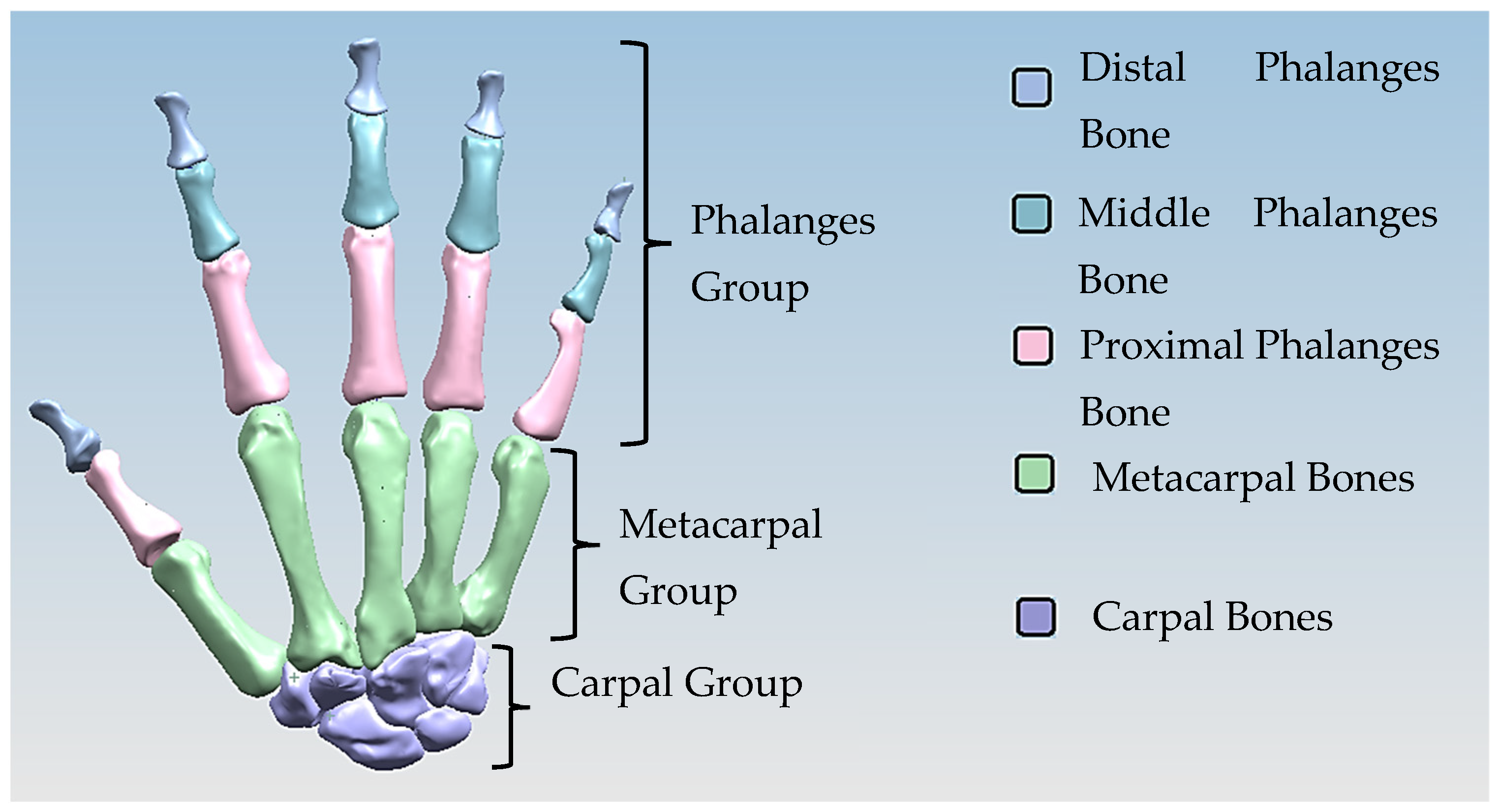
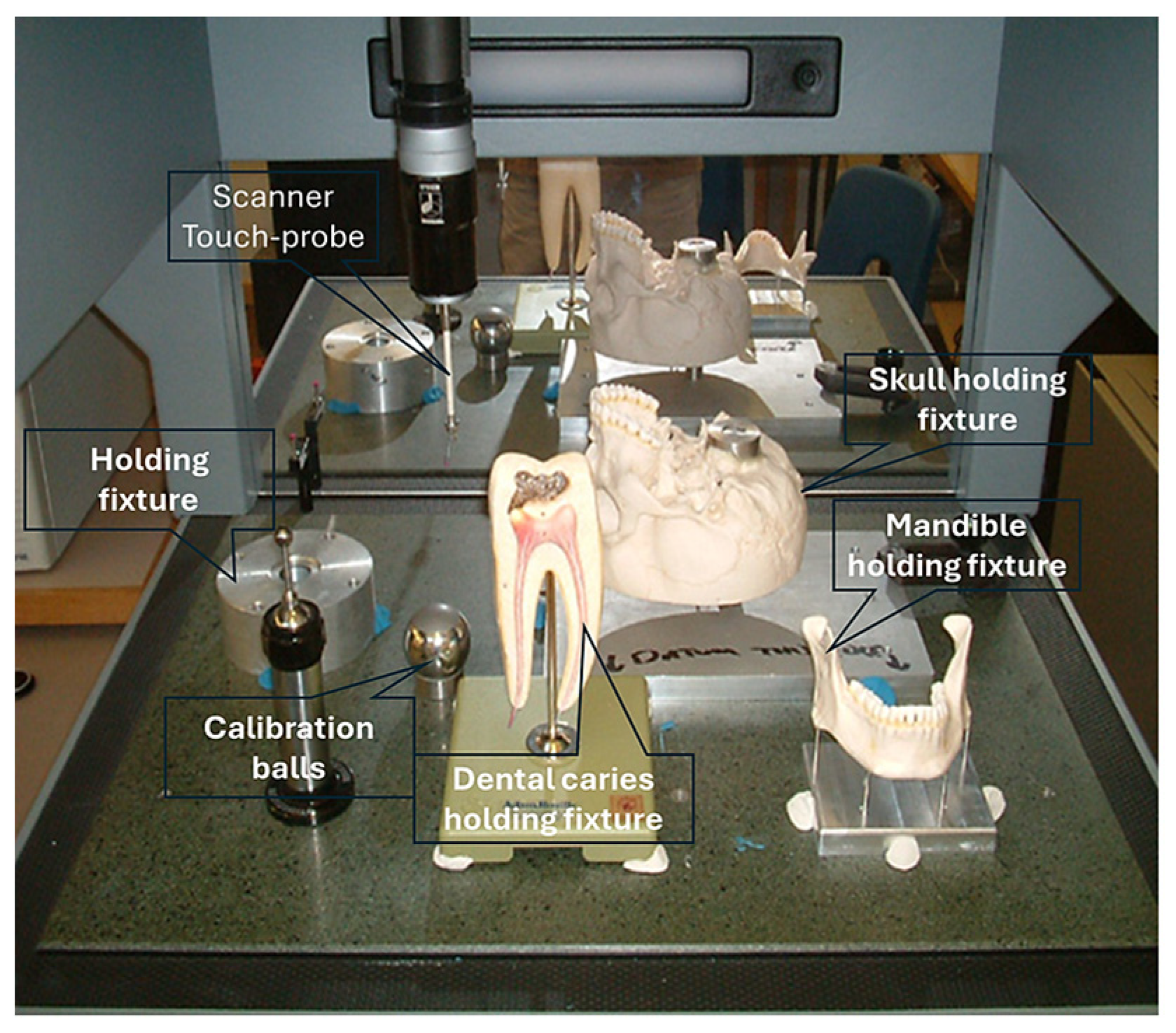










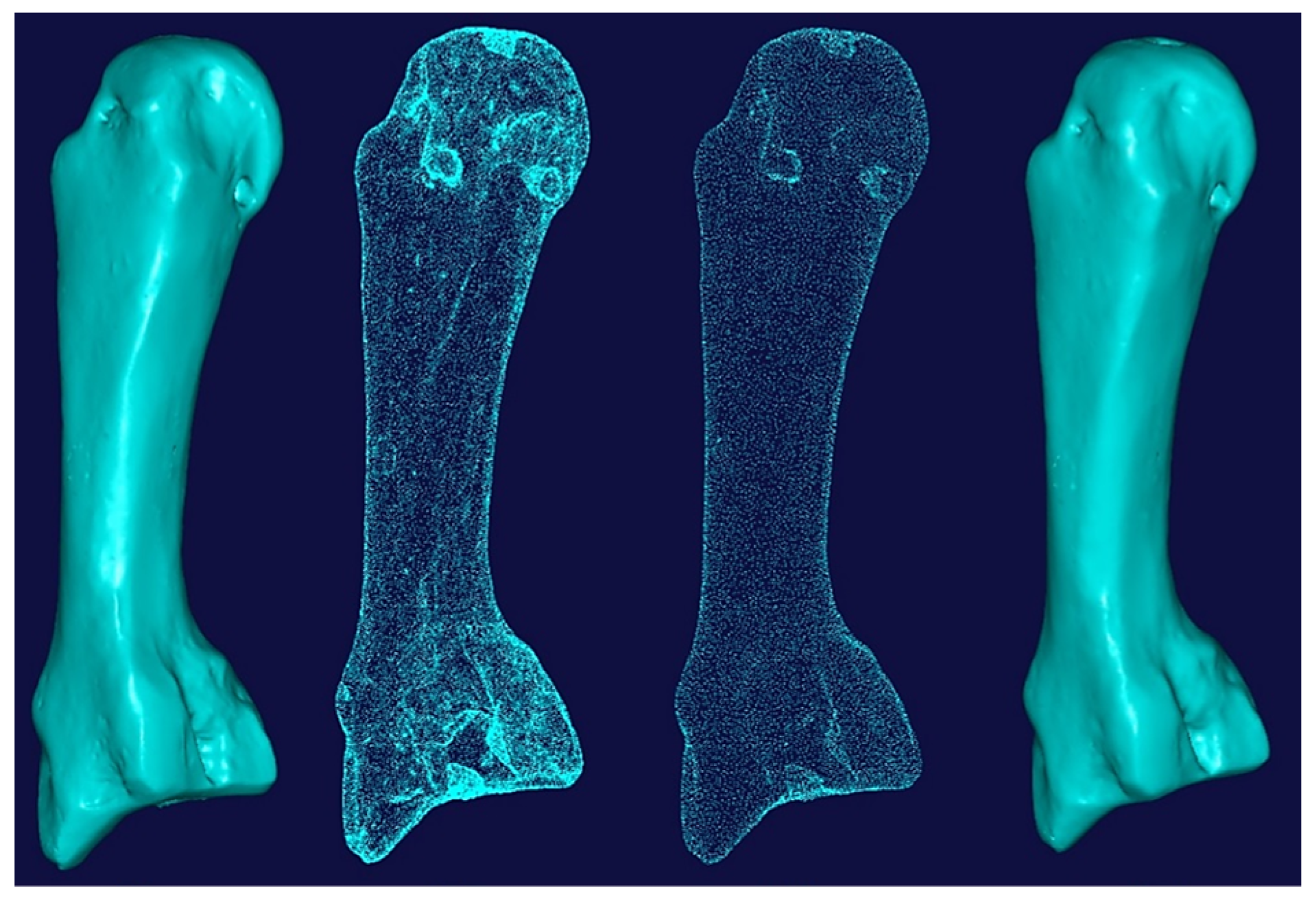
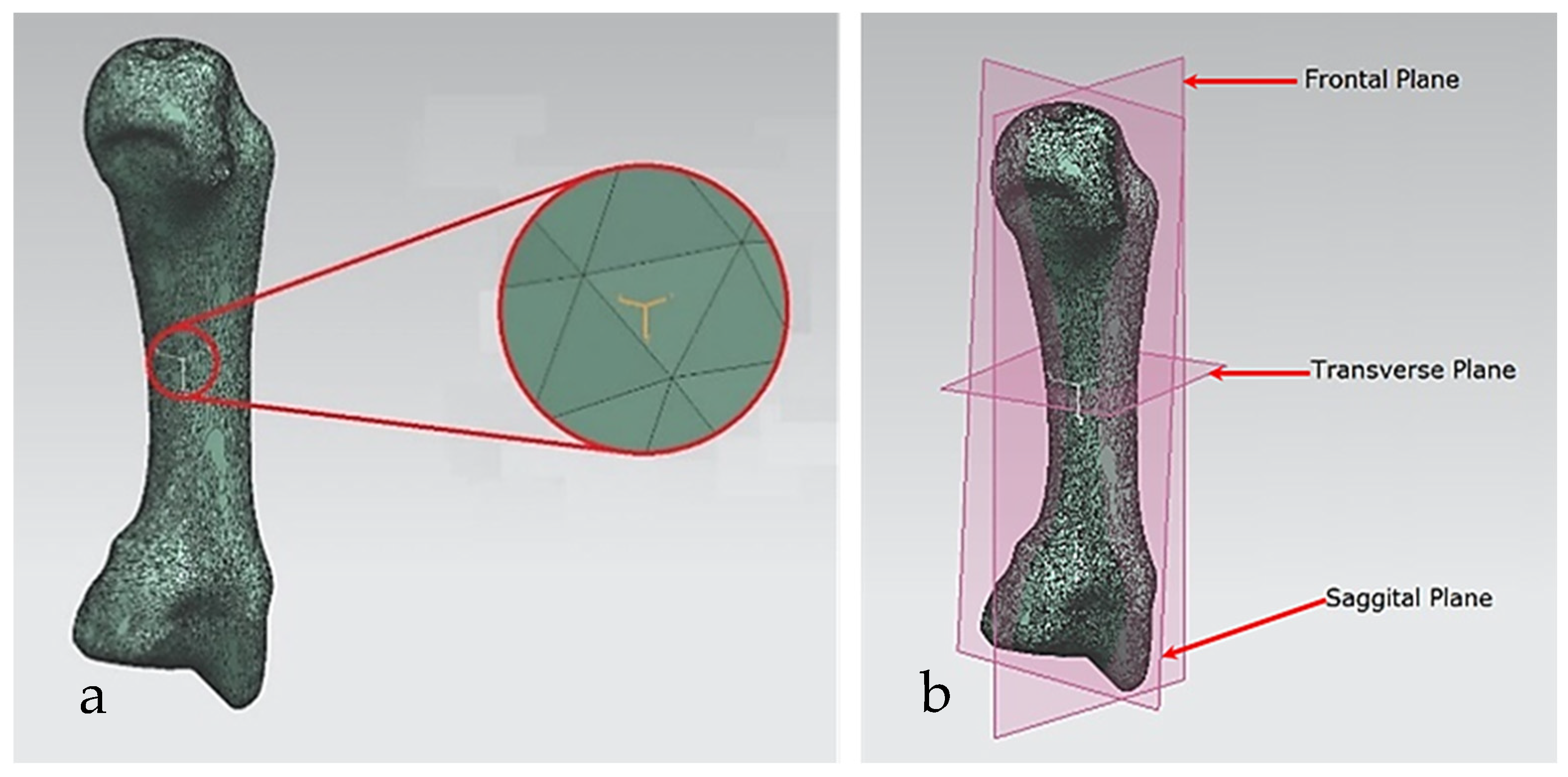
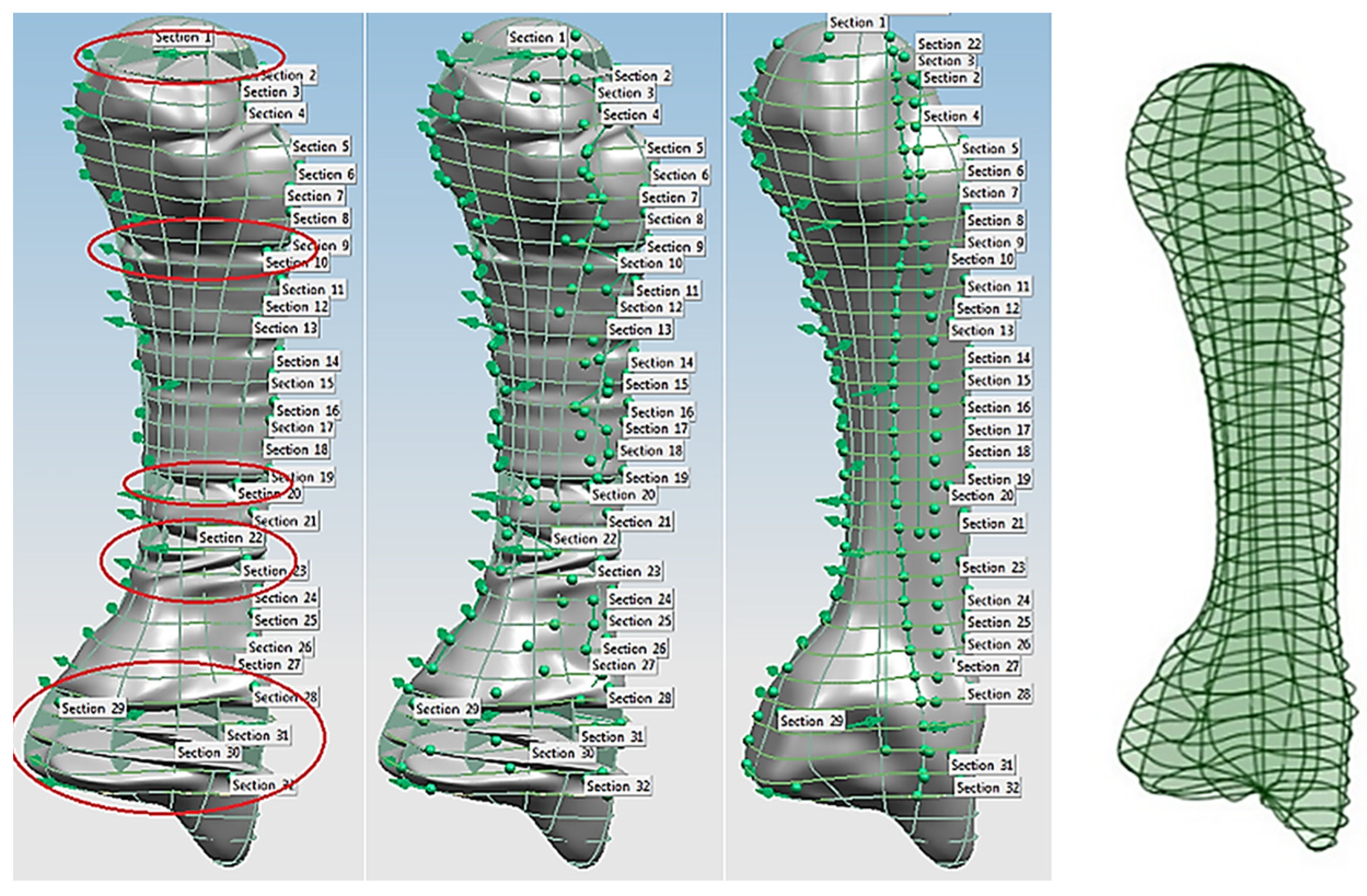

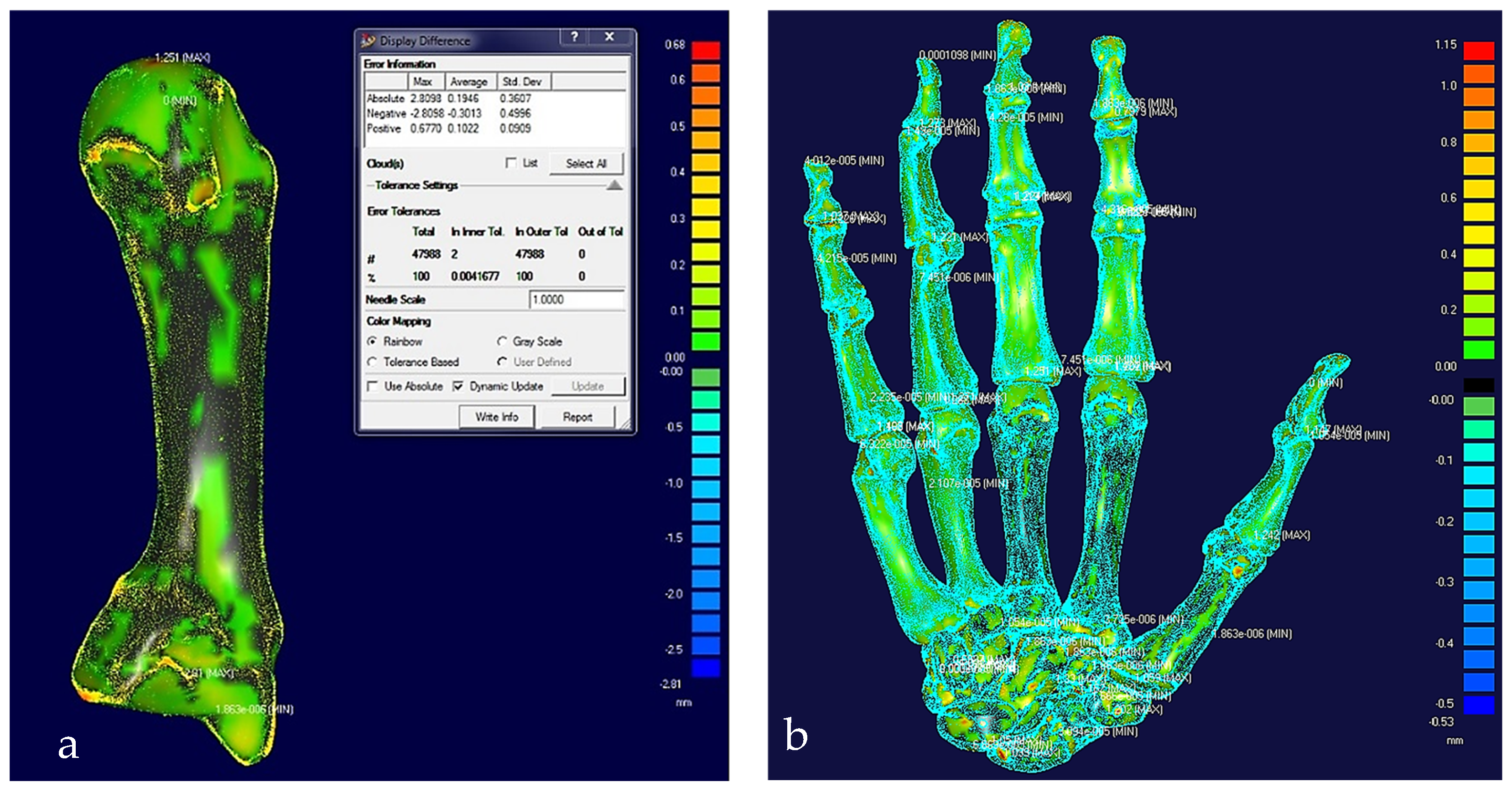
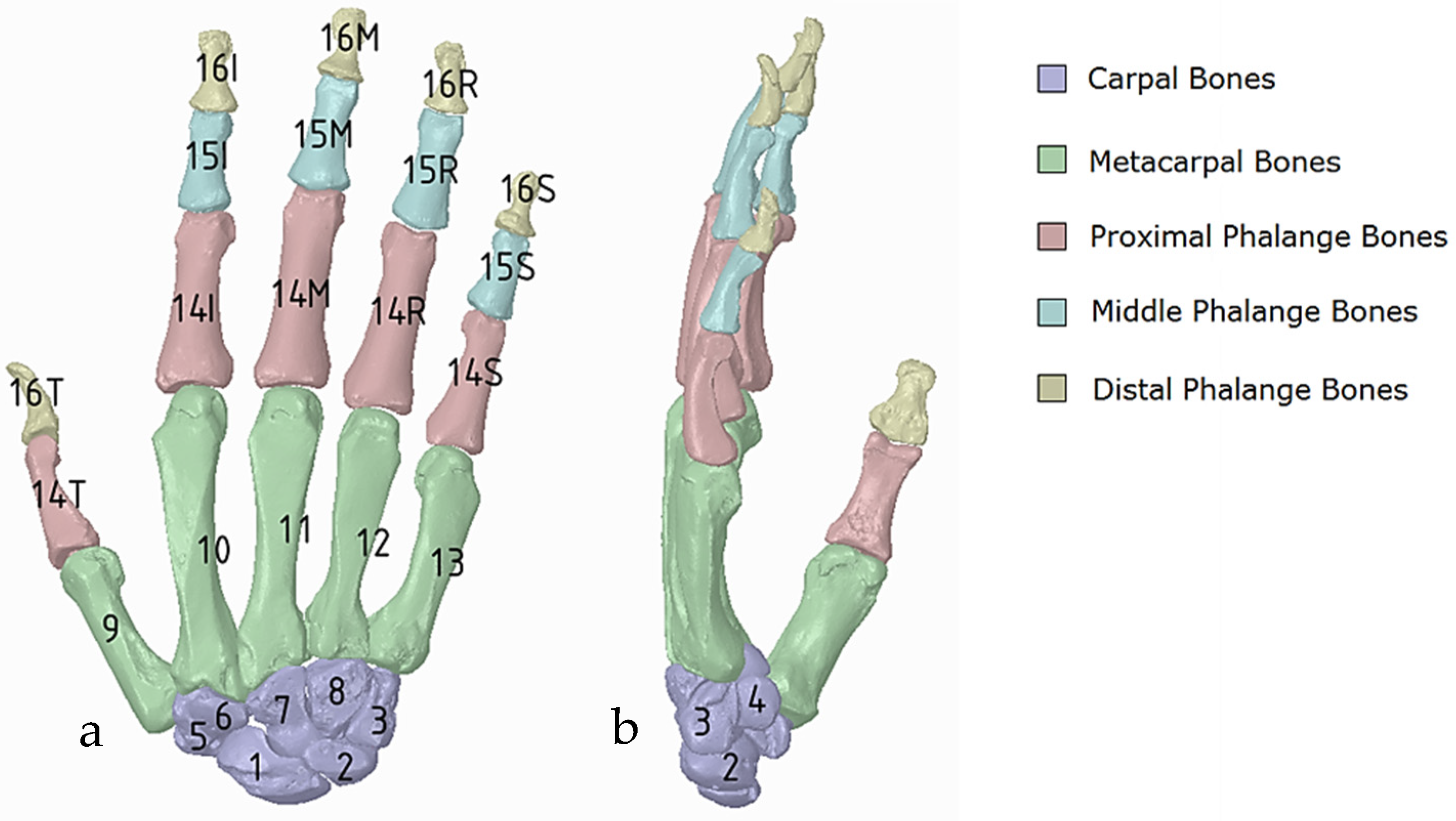
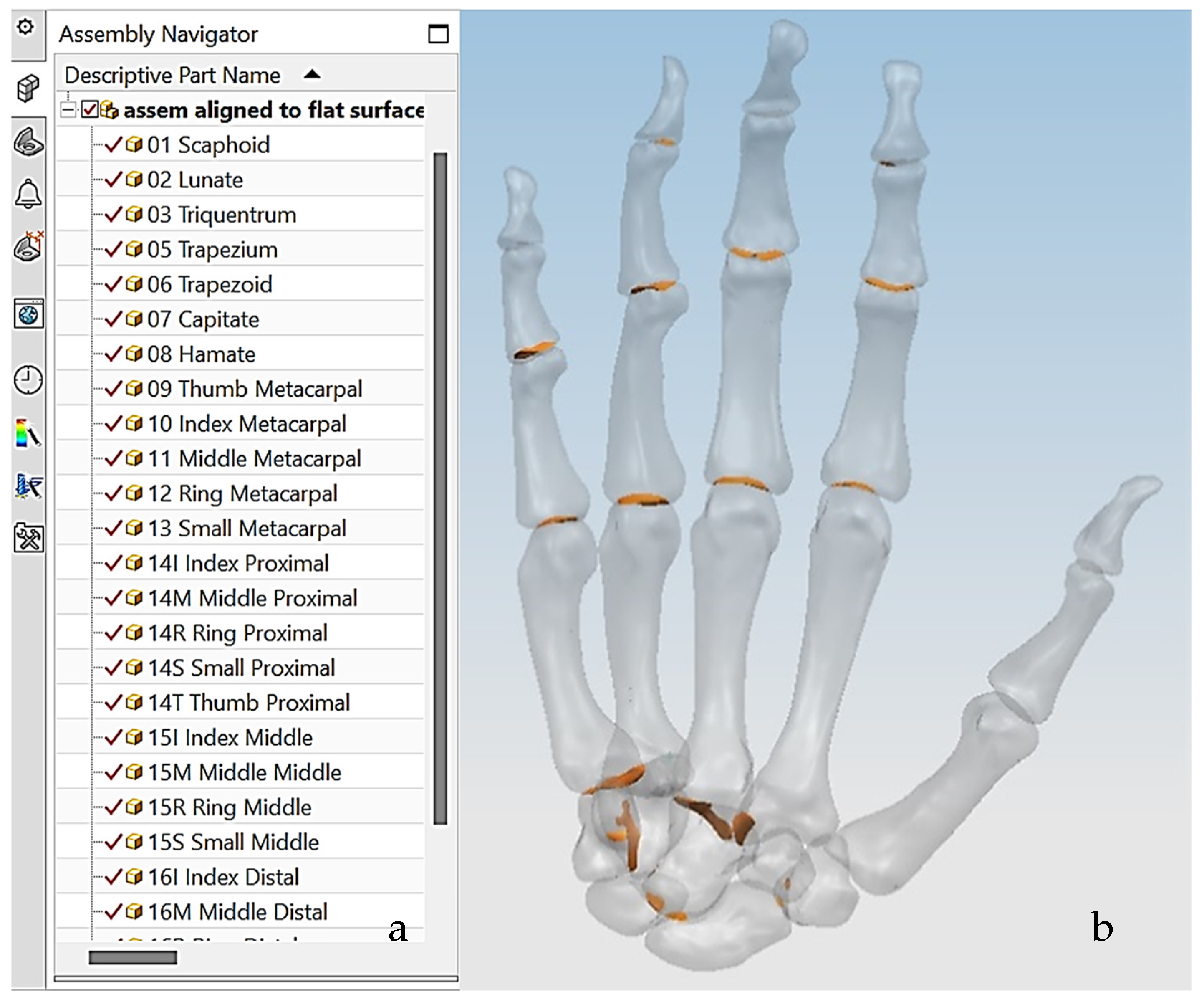

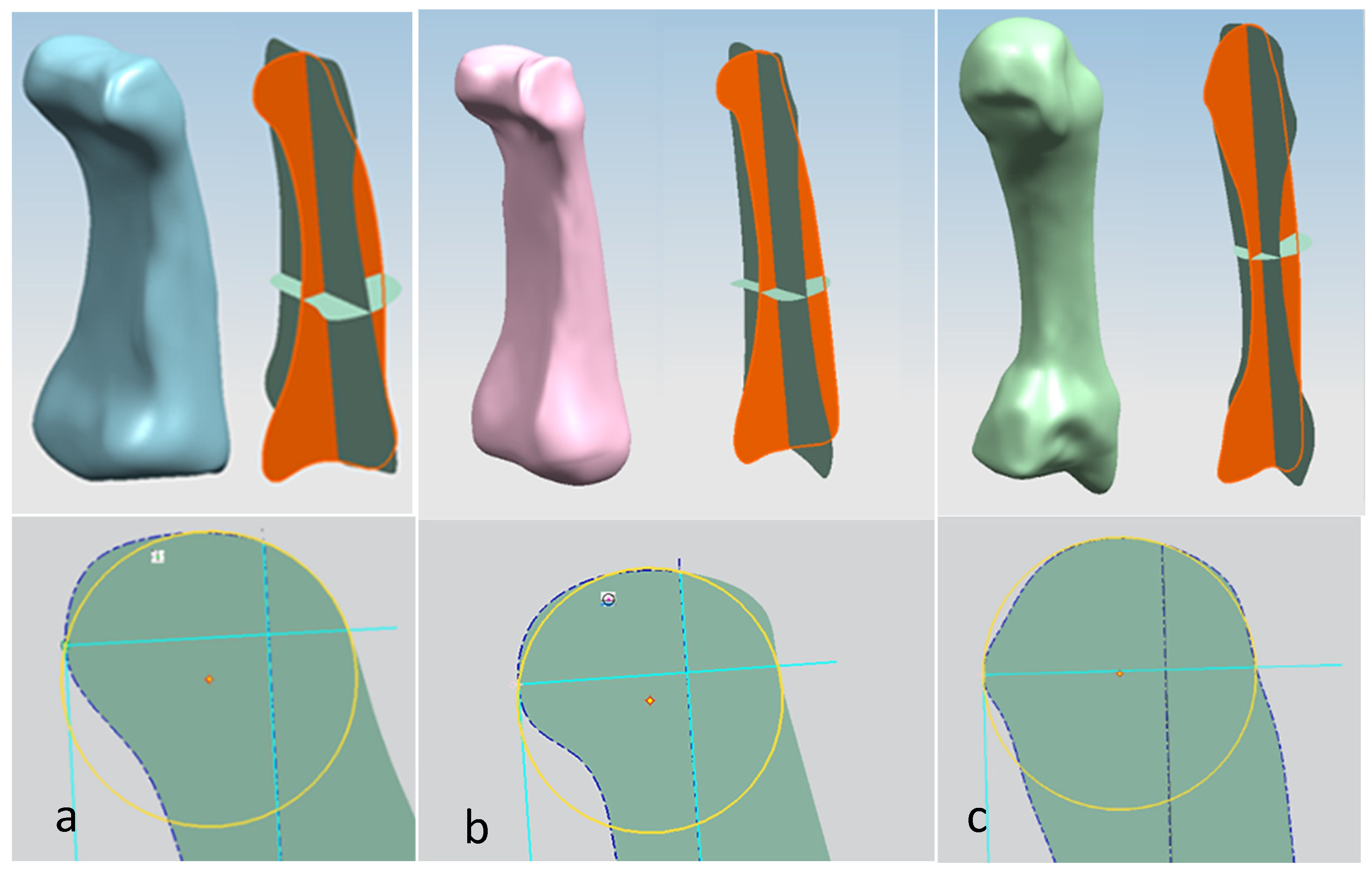
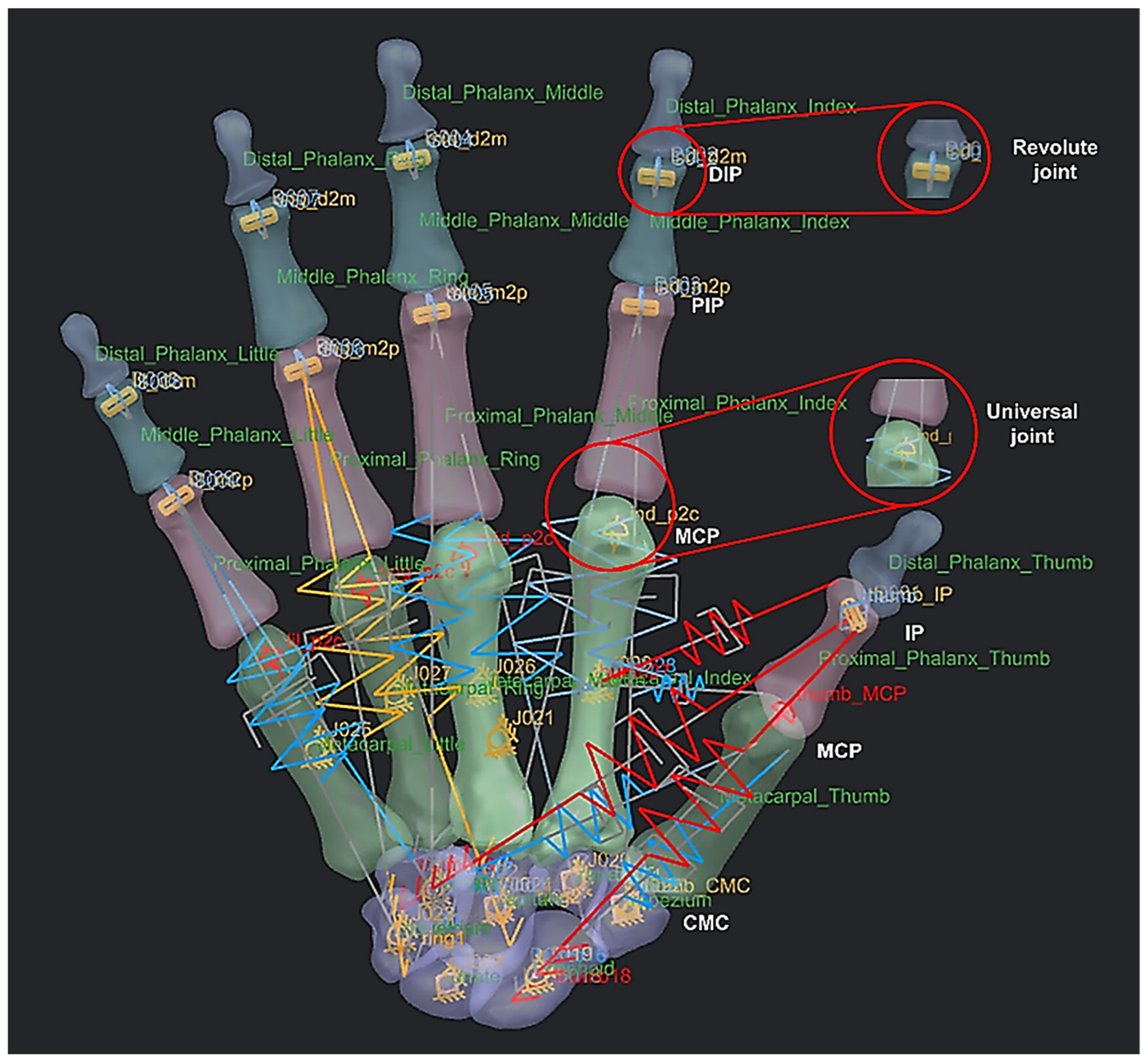






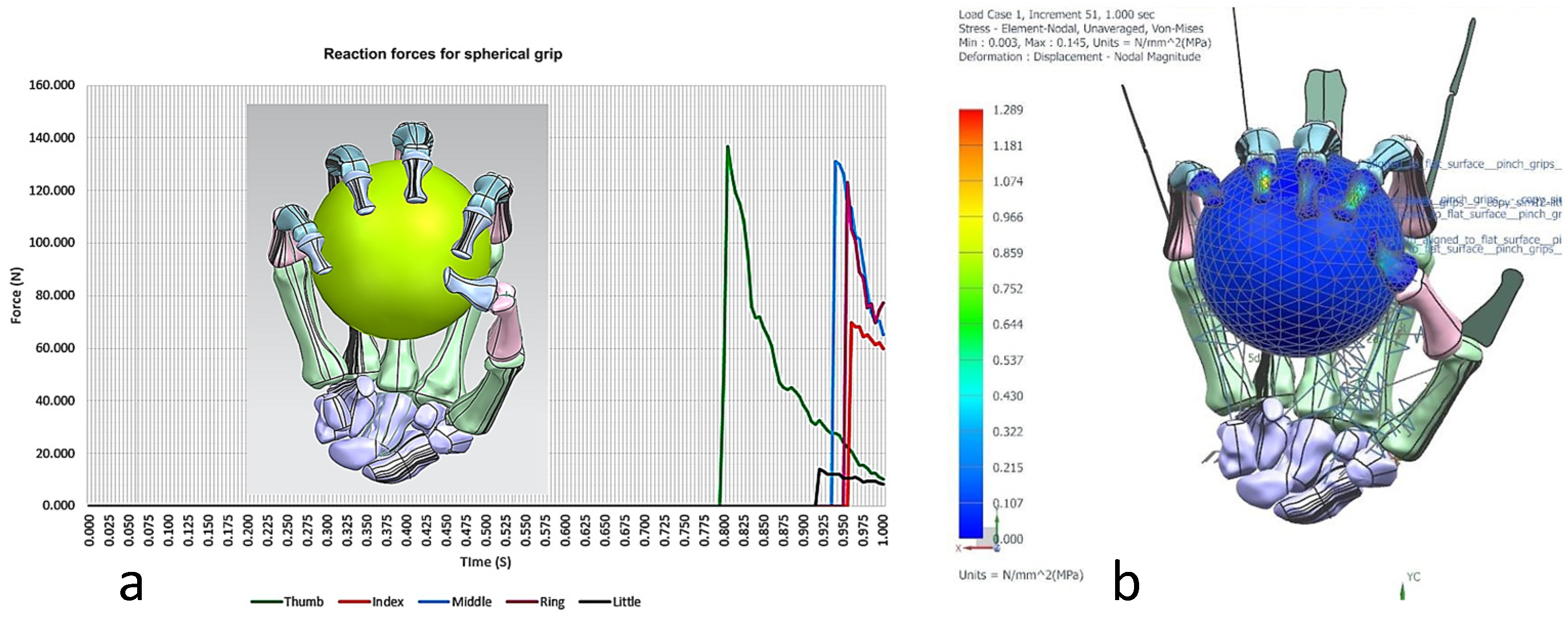
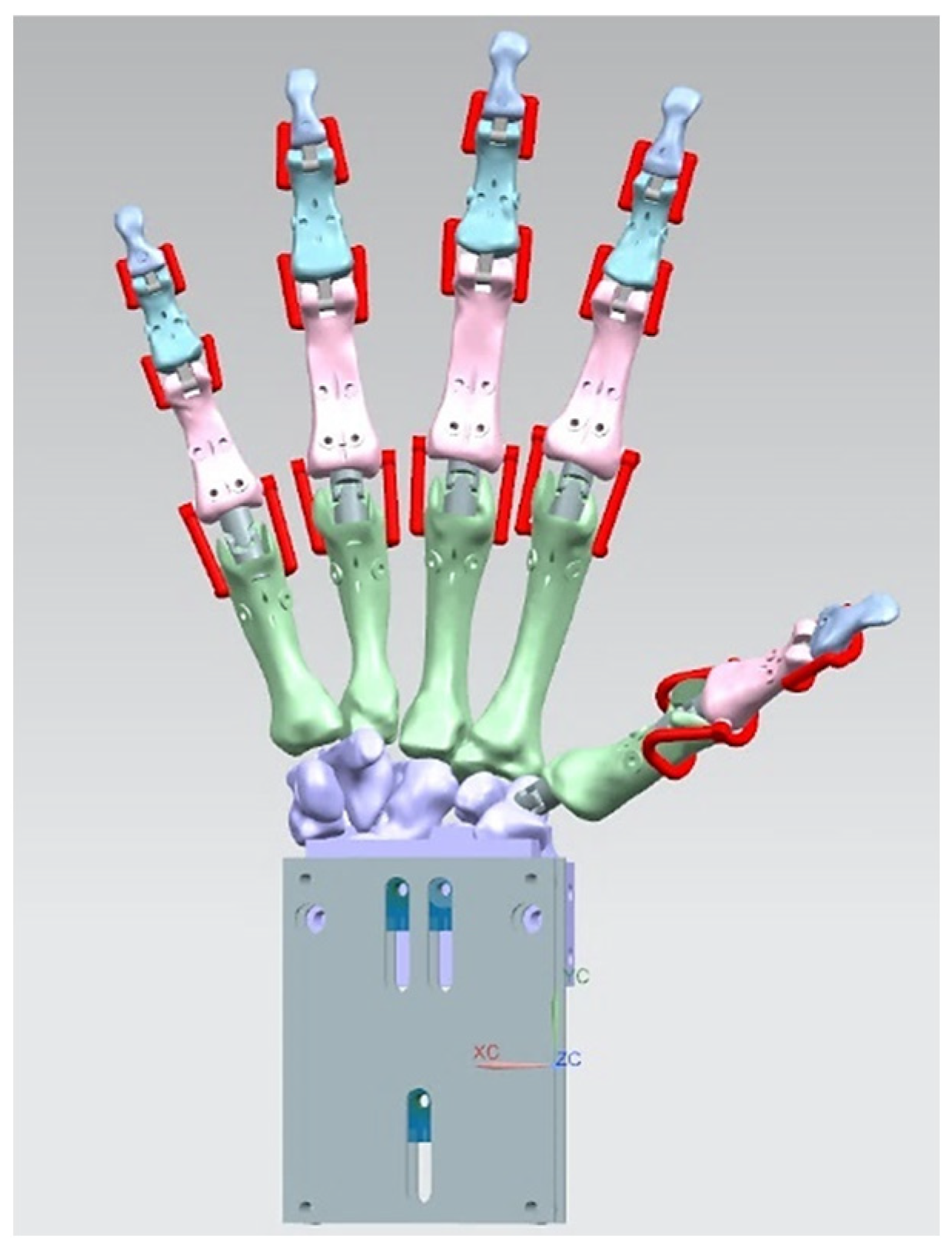
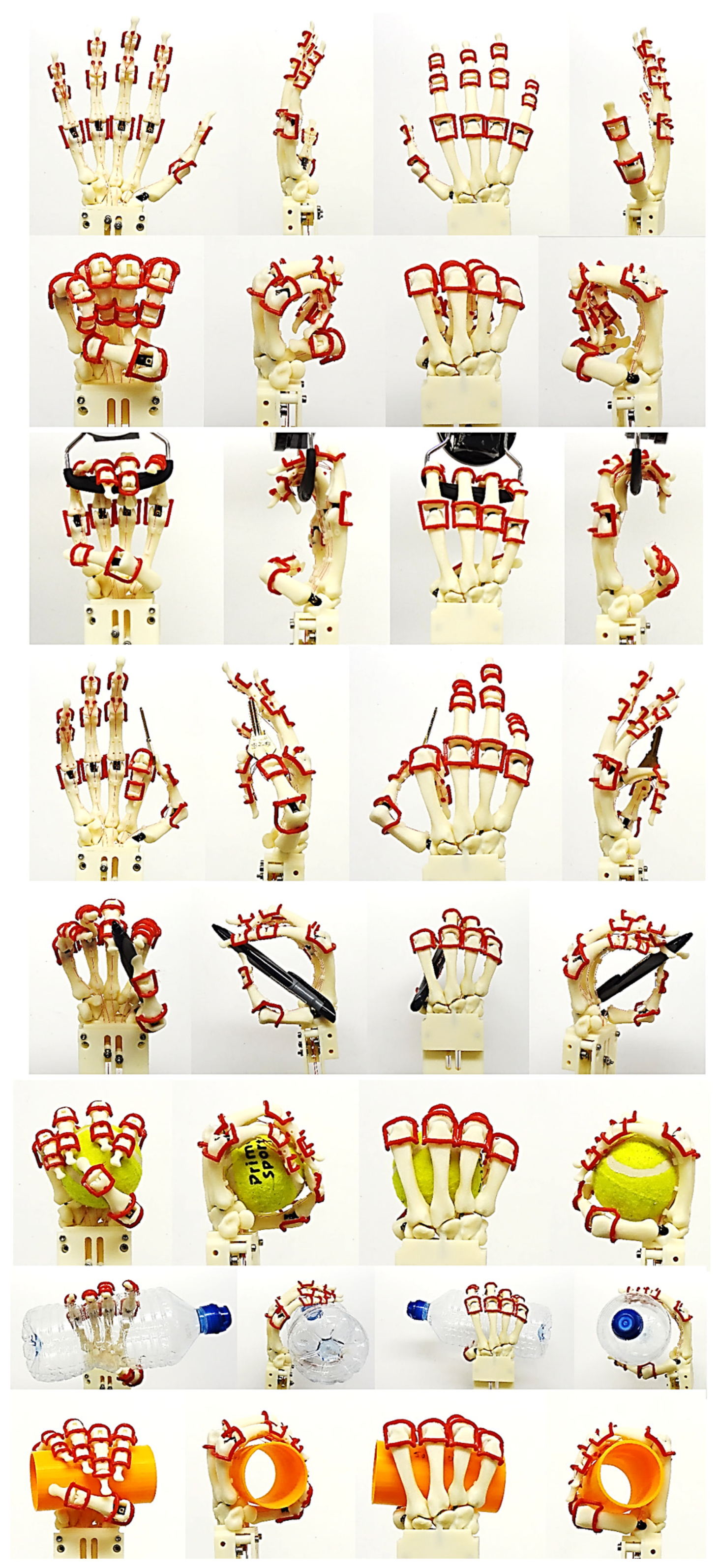

| The Fayemi’s 8-step process model known as “double symmetrical abstraction-specification cycle” | |
| Problem analysis (1) | Selection of a biological model of interest (5) |
| Abstraction of technical problem (2) | Abstraction of biological strategies (6) |
| Transposition to biology (3) | Transposition to technology (7) |
| Identification of biological models (4) | Implementation and testing in the initial context (8). |
| Gaussian Curvature, ) | ||||
|---|---|---|---|---|
| K > 0 | K = 0 | K < 0 | ||
| Mean Curvature, = () | H < 0 | Convex (Elliptical or Spherical)   | Convex Cylinder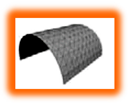 | Saddle Ridge |
| H = 0 | (Black colour) | Planar (White colour)  | Saddle—Symmetry | |
| H > 0 | Concave (Elliptical or Spherical)   | Concave Cylinder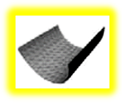 | Saddle Valley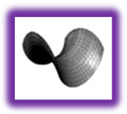 | |
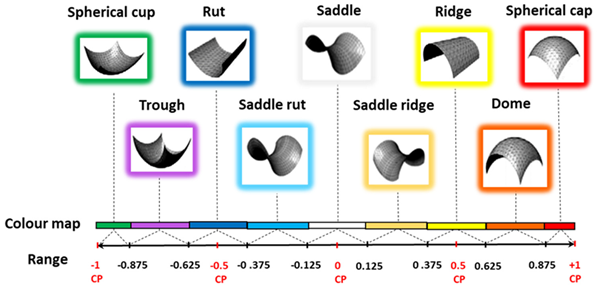 Shape Index (S) |
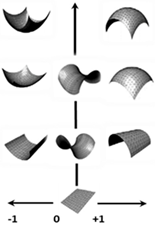 Curvedness (C) |
Disclaimer/Publisher’s Note: The statements, opinions and data contained in all publications are solely those of the individual author(s) and contributor(s) and not of MDPI and/or the editor(s). MDPI and/or the editor(s) disclaim responsibility for any injury to people or property resulting from any ideas, methods, instructions or products referred to in the content. |
© 2025 by the author. Licensee MDPI, Basel, Switzerland. This article is an open access article distributed under the terms and conditions of the Creative Commons Attribution (CC BY) license (https://creativecommons.org/licenses/by/4.0/).
Share and Cite
Alemzadeh, K. Innovative Bionics Product Life-Cycle Management Methodology Framework with Built-In Reverse Biomimetics: From Inception to Clinical Validation. Biomimetics 2025, 10, 158. https://doi.org/10.3390/biomimetics10030158
Alemzadeh K. Innovative Bionics Product Life-Cycle Management Methodology Framework with Built-In Reverse Biomimetics: From Inception to Clinical Validation. Biomimetics. 2025; 10(3):158. https://doi.org/10.3390/biomimetics10030158
Chicago/Turabian StyleAlemzadeh, Kazem. 2025. "Innovative Bionics Product Life-Cycle Management Methodology Framework with Built-In Reverse Biomimetics: From Inception to Clinical Validation" Biomimetics 10, no. 3: 158. https://doi.org/10.3390/biomimetics10030158
APA StyleAlemzadeh, K. (2025). Innovative Bionics Product Life-Cycle Management Methodology Framework with Built-In Reverse Biomimetics: From Inception to Clinical Validation. Biomimetics, 10(3), 158. https://doi.org/10.3390/biomimetics10030158






